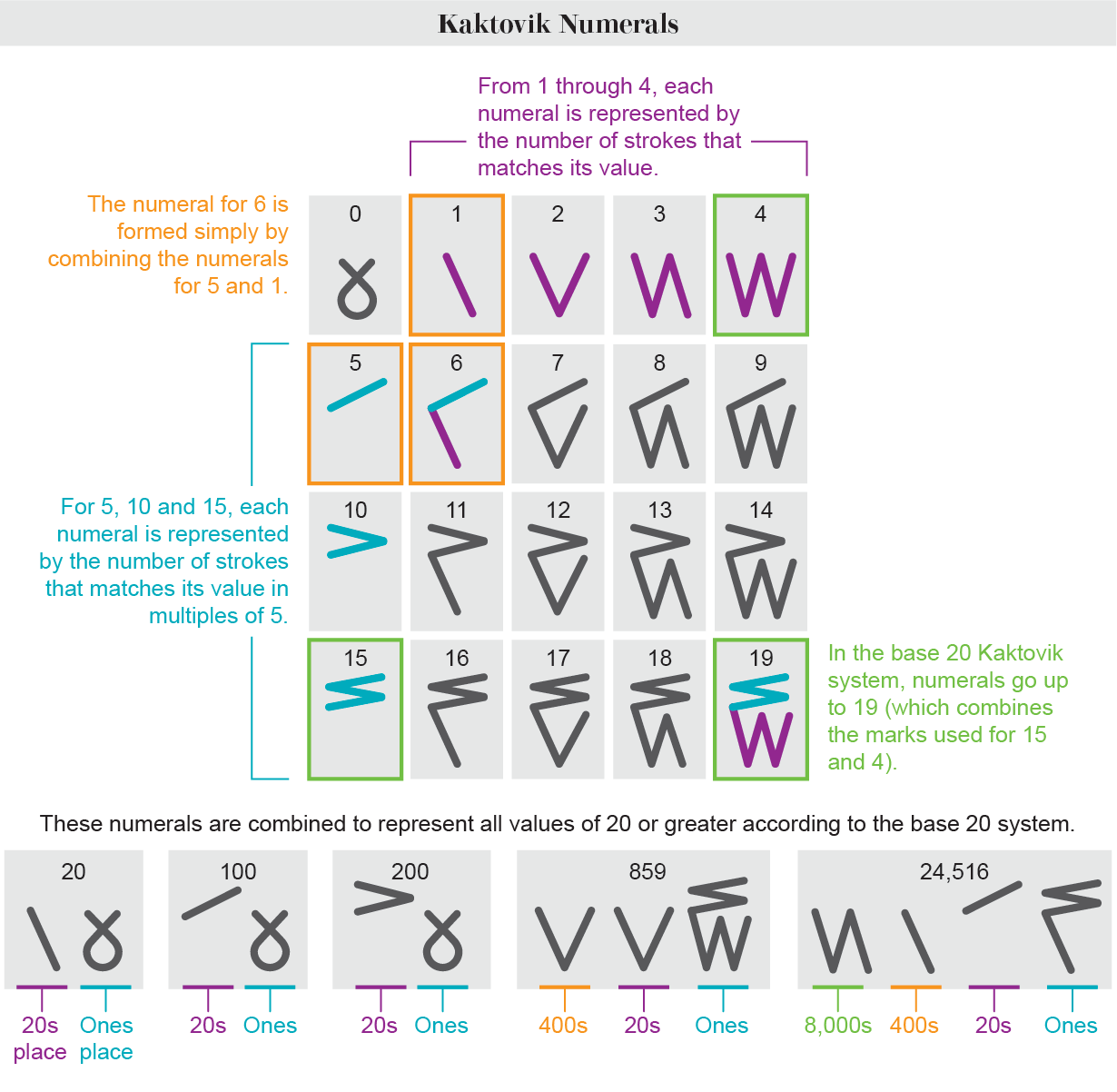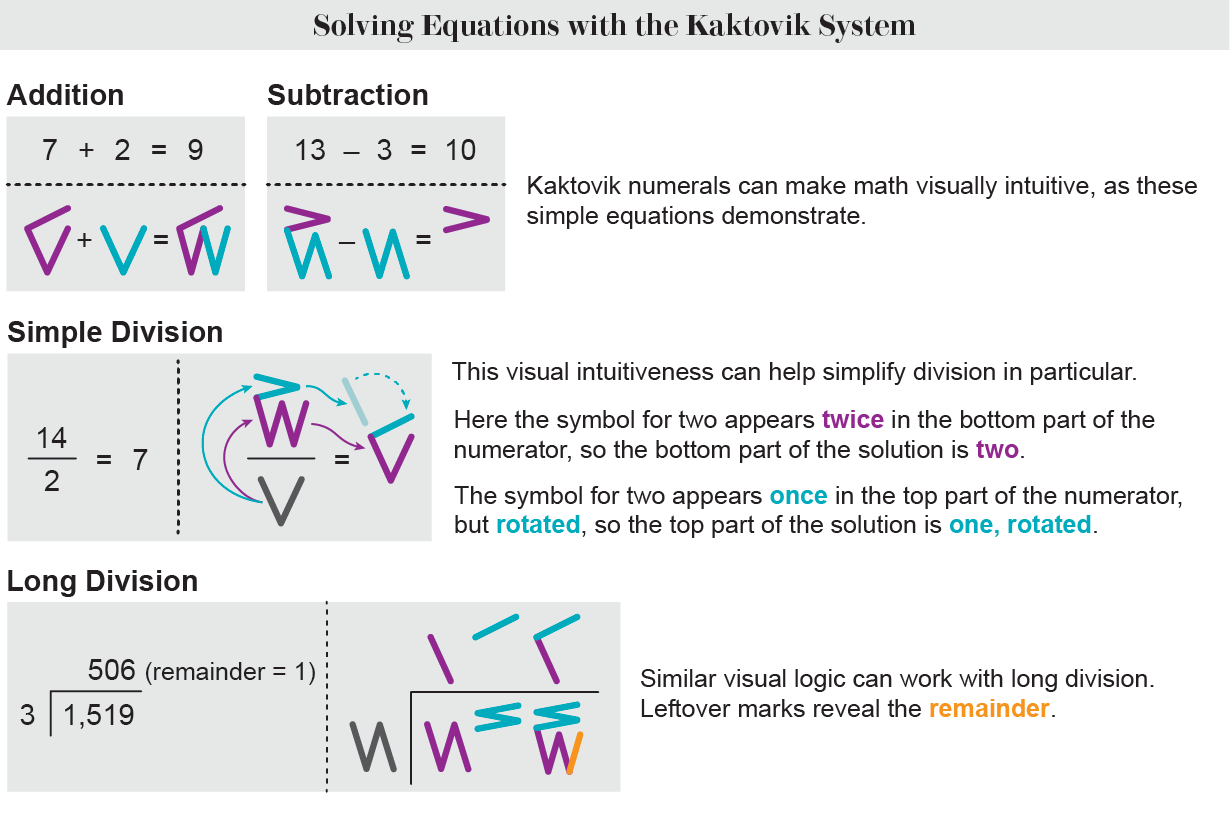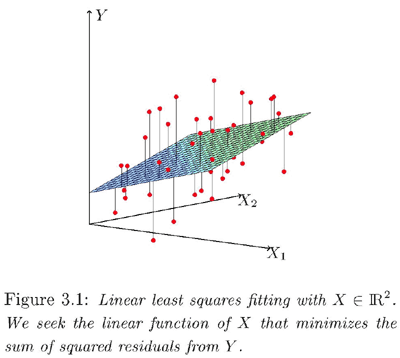I was reading The Unbeatable Squirrel Girl, a really funny and clever comic
from a while back, and it reminded me of a cute, but also really cool trick,
for counting on one hand.
Imagine from pinky to thumb, that the value of each finger doubles:
Pinky = 1Ring = 2Middle = 4Index = 8Thumb = 16
And each finger can be either Up/On (1), or Down/Off (0).
So let's start counting. I show it as multiplication and addition here,
as vectors, but you can just hold up your hand, or lay it on a surface
like a keyboard or piano, whatever makes sense for you, and just feel it
on your fingers.
1: 1(1) + 2(0) + 4(0) + 8(0) + 16(0) = 1 + 0 + 0 + 0 + 0 = 1 2: 1(0) + 2(1) + 4(0) + 8(0) + 16(0) = 0 + 2 + 0 + 0 + 0 = 2
Simple enough so far. You can see from the ones and zeroes, it's just the
position of your fingers. But what about 3, a number that you don't have a
finger for? Just set your pinky and ring finger both to the ON
position.
3: 1(1) + 2(1) + 4(0) + 8(0) + 16(0) = 1 + 2 + 0 + 0 + 0 = 3
And numbers larger than what we have fingers for, like 17? Pinky and thumb
are ON, the rest are OFF.
17: 1(1) + 2(0) + 4(0) + 8(0) + 16(1) = 1 + 0 + 0 + 16 = 17
Normally when we think of numbers, we think of Arabic Numerals in Base 10,
meaning 0 through 9, with 10, 20, 30, ..., 100, etc., as like the next
iteration.
When we use this approach, we're counting in Base 2, also known as Binary.
If we think of our fingers each as representing binary states, we can infer
the value just from 0's and 1's. But, understanding the relationship between
Base 10 and Base 2 visually and kinesthetically through our fingers makes it
easier to understand.
In other words, starting from 0, we can think of each finger as
representing 2** (to the power of) the incrementing values of our fingers:
1: 2**0 == Pinky 2: 2**1 == Ring 4: 2**2 == Middle 8: 2**3 == Index 16: 2**4 == Thumb
So instead of:
17: 1(1) + 2(0) + 4(0) + 8(0) + 16(1) = 1 + 0 + 0 + 16 = 17
We can just represent it as:
17: 1 0 0 0 1
As I was reading the comic, I couldn't help but start counting from 0 to
31, it was just fun to do, even meditative. It took a bit of effort at
first, but now I can usually on two hands get to 128 fairly trivially. Going
from 128 to 256 I usually end up losing focus or making a mistake somewhere
along the way, but it's still really fun!
Here is our full table:
n: 1 2 4 8 160: 0 0 0 0 01: 1 0 0 0 02: 0 1 0 0 03: 1 1 0 0 04: 0 0 1 0 05: 1 0 1 0 06: 0 1 1 0 07: 1 1 1 0 08: 0 0 0 1 09: 1 0 0 1 010: 0 1 0 1 011: 1 1 0 1 012: 0 0 1 1 013: 1 0 1 1 014: 0 1 1 1 015: 1 1 1 1 016: 0 0 0 0 117: 1 0 0 0 118: 0 1 0 0 119: 1 1 0 0 120: 0 0 1 0 121: 1 0 1 0 122: 0 1 1 0 123: 1 1 1 0 124: 0 0 0 1 125: 1 0 0 1 126: 0 1 0 1 127: 1 1 0 1 128: 0 0 1 1 129: 1 0 1 1 130: 0 1 1 1 131: 1 1 1 1 1
First image I found on google images. They went the opposite direction (thumb -> pinky) rather than what I said
but it amounts to the same thing. You can also reverse the up and down if
your pinky is capable of that, and then you get cool ninja / spiderman /
punkrock handsigns. Whatever works for you, have fun with it.
During my Insight Fellowship after leaving academia, I struggled to learn a
lot of the algorithmic and other computer science and software engineering
fundamentals that I needed for industry. I didn't have the training and it
definitely didn't come to me intuitively. Another Fellow in the group who
had a much deeper intuition towards algorithms would often help me study,
and one of the algorithms he worked through with me was in converting a
decimal (number) to a binary representation. Rather than counting on my
hands (honestly that may have been better...), I came to understand the
algorithm as a vector representation, just another way of getting at the
same thing, but either way, in so doing, a lot of things clicked into place
for me. Not just how to write algorithms, but how to understand mathematical
relationships, and in understanding aspects of natural philosophy, or how
the universe works.
Imagine a World where people counted this way. What kind of culture
would this be? What would be their myths, laws, philosophies, arts, and
sciences?
There are other ways to reconceptualize numbers physically. This system is
in Base 20, and computations can be inferred from the physical relationship
between strokes:
A Number System Invented by Inuit Schoolchildren
Imagine a world where people counted this way?
You don't have to imagine it.
From the article linked above:
The Alaskan Inuit language, known as Iñupiaq, uses an oral counting
system built around the human body. Quantities are first described in
groups of five, 10, and 15 and then in sets of 20. The system “is
really the count of your hands and the count of your toes,”...
Because of the tally-inspired design, arithmetic using the Kaktovik
numerals is strikingly visual. Addition, subtraction and even long
division become almost geometric. The Hindu-Arabic digits are an
awkward system, Bartley says, but “the students found, with their
numerals, they could solve problems a better way, a faster way.”...
Thanks to efforts by linguists working with the Script Encoding
Initiative at the University of California, Berkeley, the numerals were
included in the September 2022 update of Unicode, an international
information technology standard that enables the digitization of the
world’s written languages. The new release, Unicode 15.0, provides a
virtual identifier for each Kaktovik numeral so developers can
incorporate them into digital displays. “It really is revolutionary for
us,” Judkins says. “Right now we either have to use photos of the
numerals or write them by hand.”
As of Unicode 15.0, you can even use these symbols in your digital
communications, as cited in the same article above:








